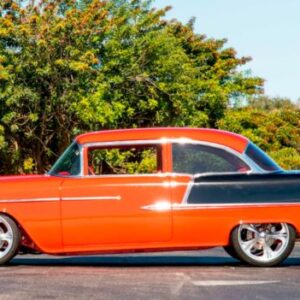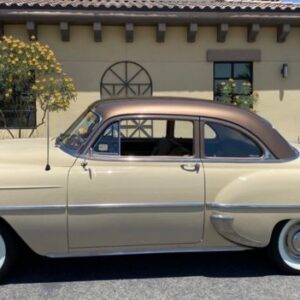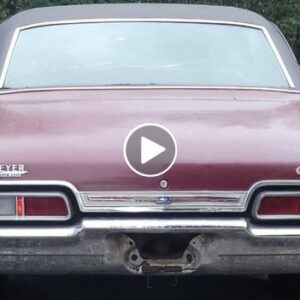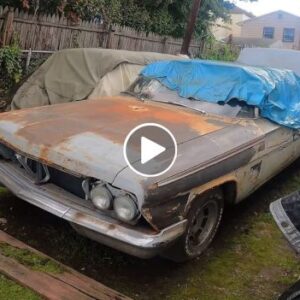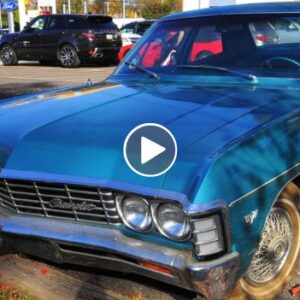The 1969 Chevrolet Camaro Z28 has earned its place as an icon in American automotive history. With its powerful performance, aggressive design, and legendary racing pedigree, the Camaro Z28 remains a favorite among classic car enthusiasts and collectors.
1. Performance and Power
Under the hood of the 1969 Camaro Z28 lies the renowned DZ 302 V8 engine. This high-performance engine boasts a 4.9-liter displacement and delivers an impressive 290 horsepower, making the Z28 a force to be reckoned with on the streets and the racetrack. Coupled with a 4-speed manual transmission, the Z28’s powertrain provides an exhilarating driving experience that is hard to match.
DZ 302 V8 Engine
The heart of the 1969 Camaro Z28 is its legendary DZ 302 V8 engine. This small-block engine features a 4.9-liter displacement and was specifically designed for the Z28 to meet the SCCA Trans-Am racing series’ engine size requirements. Despite its factory rating of 290 horsepower, many enthusiasts believe that the actual output was considerably higher, with estimates ranging from 350 to 375 horsepower.
The DZ 302 engine utilizes high-performance components, such as a forged steel crankshaft, forged aluminum pistons, and a solid-lifter camshaft. The engine’s high-revving nature, with a redline of around 7,000 RPM, made it particularly well-suited for racing applications.
Transmission and Drivetrain
The 1969 Camaro Z28 came standard with a close-ratio Muncie M21 4-speed manual transmission, which provided quick and precise gear shifts, enhancing the car’s performance capabilities. An optional M22 “Rock Crusher” transmission, known for its durability and strength, was also available for those looking for even greater performance.
The Z28 featured a 12-bolt rear axle with Positraction, a limited-slip differential that improved traction and power delivery by ensuring that both rear wheels received torque, even in low-traction situations.
Suspension and Handling
In addition to its powerful engine, the 1969 Camaro Z28 boasted a well-tuned suspension system, which greatly contributed to its performance and handling. The Z28 came equipped with the F41 Special Performance Suspension package, which included heavy-duty front and rear springs, heavy-duty shock absorbers, and a thicker front anti-roll bar.
This suspension setup, combined with the car’s power steering and front disc brakes, gave the Z28 excellent handling characteristics, particularly when cornering at high speeds. This made the car not only a straight-line performer but also a capable handler on winding roads and racetracks.
2. Aggressive Design
The 1969 Chevrolet Camaro Z28’s design is characterized by its aggressive stance and distinctive styling features. The car’s unmistakable lines are accentuated by its cowl induction hood, which not only adds to its muscular appearance but also serves to improve engine performance. The Z28 package also includes front and rear spoilers, sport stripes, and unique badging, making it stand out from other Camaro models.
Exterior Styling
The 1969 Camaro Z28 showcases a bold and assertive design that has stood the test of time. Its long hood and short rear deck give it a powerful stance, while the sculpted body lines and flared wheel arches add to its muscular appearance.
One of the most distinctive design elements of the Z28 is the cowl induction hood. This functional hood features an air scoop that forces cool air into the engine compartment, enhancing engine performance. The hood also adds an aggressive touch to the car’s overall design.
Other unique design features of the 1969 Camaro Z28 include front and rear spoilers, which improve the car’s aerodynamics and give it a race-inspired look. The Z28 package also includes signature sport stripes, which run along the sides of the car and across the hood, as well as exclusive badging that distinguishes it from other Camaro models.
Interior Design
The interior of the 1969 Camaro Z28 is designed with both comfort and performance in mind. The car features vinyl bucket seats, which provide excellent support during spirited driving, and a full-length center console that houses the shifter and gauges.
The instrument panel is driver-focused, with easy-to-read gauges and well-placed controls. Optional extras, such as wood grain trim and a deluxe steering wheel, add an additional touch of luxury and sophistication to the Z28’s interior.
Customization Options
The 1969 Camaro Z28 was available with a range of customization options, allowing buyers to personalize their vehicle to suit their tastes. These options included a variety of exterior colors, interior trim packages, and performance upgrades, such as larger carburetors and a dual exhaust system.
3. Sales and Production
The 1969 Chevrolet Camaro Z28 enjoyed strong sales and production numbers, reflecting its popularity among performance-minded buyers and muscle car enthusiasts. While the exact production figures for the Z28 can vary slightly depending on the source, the following information provides an overview of the sales and production of this iconic American muscle car.
Production Numbers
This figure represents a significant increase compared to the 1967 and 1968 model years, which saw the production of around 602 and 7,199 Z28 models, respectively.
The spike in production numbers can be attributed to several factors, including the growing popularity of the Camaro Z28 as a performance vehicle, the car’s racing success in the SCCA Trans-Am Series, and Chevrolet’s increased marketing efforts to promote the Z28 package.
Sales Performance
The strong production numbers of the 1969 Camaro Z28 also translated into robust sales figures. While specific sales data for the Z28 is difficult to pinpoint, the overall sales of the Camaro reached a record high of approximately 243,000 units in 1969, with the Z28 accounting for a significant portion of that total.
The 1969 model year was particularly successful for the Camaro, as it outsold its main rival, the Ford Mustang, for the first time since its introduction in 1967. The Camaro’s appealing design, performance capabilities, and diverse range of available options, including the Z28 package, contributed to its strong sales performance.
Collector’s Market
Today, the 1969 Chevrolet Camaro Z28 is highly sought after in the collector car market. Well-preserved and restored examples command premium prices at auctions and private sales, reflecting the car’s enduring popularity and iconic status.
The combination of the Z28’s powerful performance, aggressive design, and storied racing history make it a desirable classic car for collectors and muscle car enthusiasts alike. Limited production numbers and the car’s significance in American automotive history further contribute to its high demand and value in the collector’s market.
4. Racing Pedigree
The 1969 Camaro Z28 is more than just a muscle car; it’s also a proven race winner. It was designed to compete in the SCCA Trans-Am racing series, where it dominated the competition and helped Chevrolet secure two consecutive manufacturer’s championships in 1968 and 1969. The Z28’s racing success has only added to its lasting appeal and legendary status among car enthusiasts.
SCCA Trans-Am Series
The SCCA Trans-Am Series, which began in 1966, was a popular racing championship that featured production-based sports cars competing in a road racing format. The series attracted major American automobile manufacturers, including Ford, Chevrolet, Pontiac, and AMC, who were eager to showcase their high-performance vehicles on the racetrack.
To compete in the Trans-Am Series, the Chevrolet Camaro Z28 had to meet specific engine size and production requirements. The Z28’s DZ 302 V8 engine was developed to comply with the series’ 5.0-liter engine displacement limit, while the required minimum production volume was achieved through the introduction of the Z28 as a regular production option for the Camaro.
Racing Success
The Camaro Z28 made its Trans-Am racing debut in 1967 and quickly became a formidable competitor. The car’s powerful DZ 302 V8 engine, well-tuned suspension, and aggressive design made it an ideal platform for racing success.
In 1968, the Camaro Z28 achieved its first major victory in the Trans-Am Series, helping Chevrolet secure the manufacturer’s championship that year. The 1969 season saw the Z28 continue its dominance, with the car winning multiple races and securing Chevrolet’s second consecutive manufacturer’s title.
Notable drivers, such as Mark Donohue and Roger Penske, contributed to the Z28’s racing success. Their expertise in race car development and driving skills played a crucial role in the car’s performance on the racetrack.
Enduring Legacy
The racing pedigree of the 1969 Chevrolet Camaro Z28 has had a lasting impact on the car’s reputation and desirability. The Z28’s success in the Trans-Am Series demonstrated the car’s performance capabilities and solidified its status as a true high-performance machine.
5. Collector’s Dream
Today, the 1969 Chevrolet Camaro Z28 is a highly sought-after classic car, with well-preserved examples commanding high prices at auctions and private sales. Its combination of iconic design, impressive performance, and storied racing history make it a dream car for collectors and muscle car enthusiasts alike.
In summary, the 1969 Chevrolet Camaro Z28 is an iconic American muscle car that has captivated the hearts and minds of car enthusiasts for generations. Its powerful DZ 302 V8 engine, aggressive design, and racing pedigree have solidified its status as a true classic, making it a prized possession for collectors and an enduring symbol of American automotive excellence.

